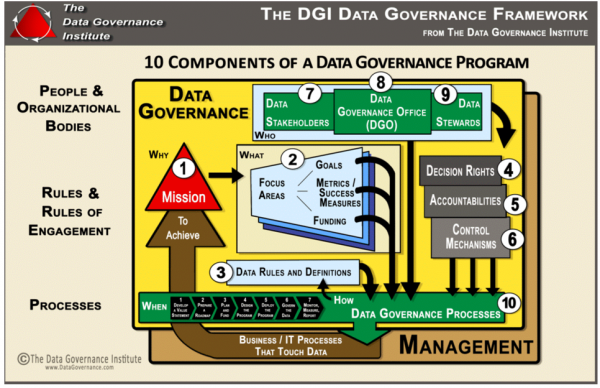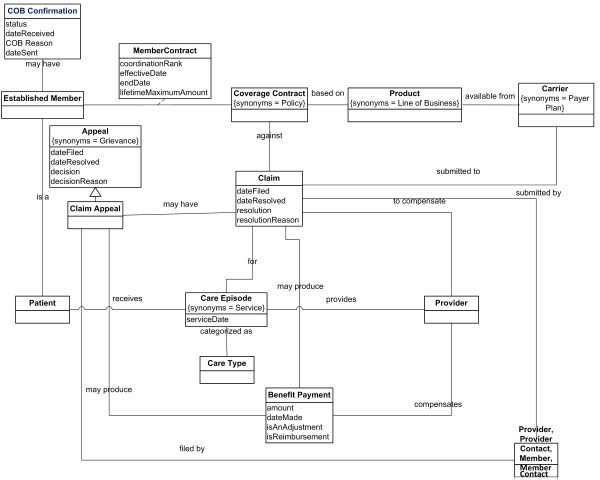If you’ve been following along with my blog series, you know that Governance is responsible for setting the framework within which information management decisions are made. This framework is not only clarifying who does what (decision rights, processes, etc.), but also the “bumpers” to keep everything under control (rules, policies, controls, etc.). All of these are described very well by the Data Governance Framework as presented by the Data Governance Institute. Here is a diagram from that site:
This is all well and good, but there is one more aspect that, although not always explicitly called out when defining a Governance Program, I happen to believe is foundational to the program and should be the responsibility of the program. I like to call it the Common Business Vocabulary and consists of two major artifacts: a Business Glossary and an Information Reference Model.
The Business Glossary is probably familiar to all of you. Most organizations have one, but not all of them necessarily put its control under the Governance Program. The Glossary is not the same thing as a Data Dictionary, as the latter is more focused upon IT Systems and Databases. The glossary needs to focus on the terms used in and by the business, that is, the language of the enterprise, therefore its value is not just in the development of solutions, but aids in communication within the enterprise by providing consistency in the definition and usage of terminology.
The Information Reference Model may be less familiar, but is no less valuable. This model provides a logical representation of the information concepts that make-up the core business of the enterprise, including their inter-relationships. The following diagram is a snippet of a model that I used to help a Customer Service group within a Healthcare Insurance Company understand the concepts needed to help a caller with a Claim Status:
These models are intended to present concepts and relationships in business terms to aid in communications both within the business areas themselves as well as between business areas and IT. Although it may look initially challenging for business users to grasp, I have found that just a little coaching and training is all that is needed for most people to grasp the concepts.
Together, these artifacts define the scope of the information to be governed, which is why I feel they are foundational and should be owned by the Governance Program.
So, in a nutshell, these are the “things” a Governance Program produces. Just producing these items obviously is not enough. For them to be useful, you have to let people know about them and show them how they help and affect them. That is the subject of my next post: Communications. As we mentioned before, Governance must be highly communicative to be successful, so I thought I’d talk a bit about what that means to me in my next entry. Thanks for reading and see you next time.


